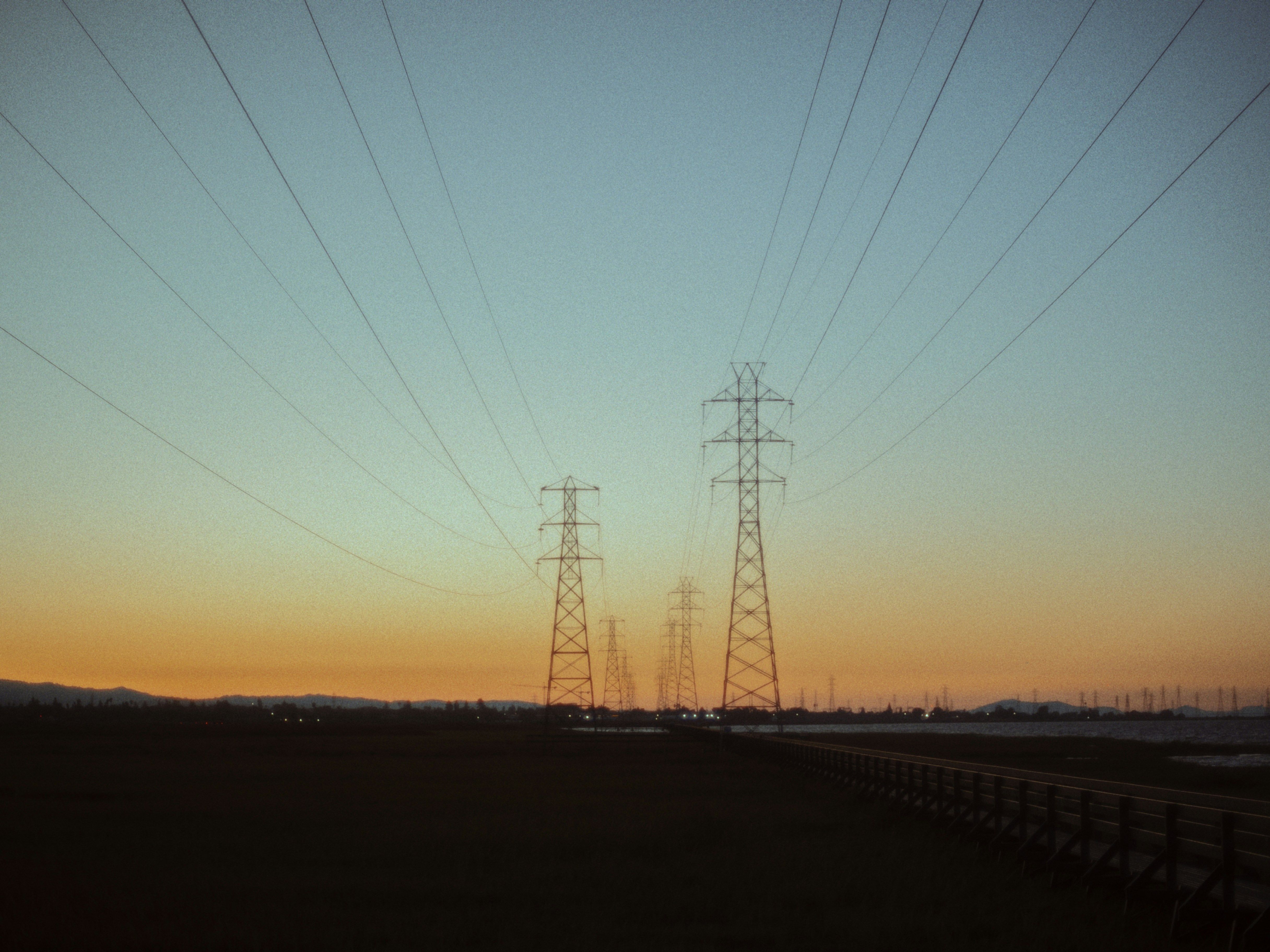Energy costs become a topic that is always hot is discussed, especially about electricity tariffs. Not only households, the industry also always thinks about this. Indonesia has its own challenges because the source of energy is diverse, but the price of electricity still makes it struggling. From PLN to private plants, the calculation is not as simple as imagined. There is a government subsidy, fluctuations in fuel prices, the same distribution costs that make the rates up and down. Not to mention the issue of energy efficiency that is often spilled even though it can help pressure. Therefore, understanding the structure of energy costs is very important – both for regulating personal and business finances. Let’s find out deeper!
Also read: LED energy efficiency and home electricity savings
Recognize the components of energy costs
Question energy costsmany think only about monthly electricity bills. In fact, there are many components that piled up together. First, there is production cost– Starting from buying fuel like coal or gas (ESDM source) to the operation of the generator. This is usually the biggest component, especially if the raw material is imported.
Continue to exist Transmission and distribution costs—Way just electricity must pass a long cable from the generator to our house. PLN must spend costs for network care, pay electric tolls to network providers, plus technical losses (Transmission loss). Iesr data says, this can add 20-30% of the total cost.
do not forget non-technical costs Like government subsidies (to help small communities) or taxes. Sometimes there are also additional costs because of the renewable energy policy, for example costs feed-in tariff For PLTS.
Which is often forgotten: Price volatility costs. If world oil rises, automatically gas electricity tariffs will go to a tightness. This is what makes the government sometimes go when calculating the basic electricity tariff (KEN source).
Finally, there is environmental costs– Coal development for example, must pay pollution compensation. So now many are pushing clean energy so that this component is not getting bigger.
In short, Electric bills are complicated calculationsnot the origin of the numbers. Understanding the components makes us more aware of energy efficiency.
Also read: Solar Panel Recycling Overcoming Electronic Waste
Factors that affect electricity tariffs
Electric tariffs do not go up and down – there are many technical factors And Politics that influence the price. First, fuel price Like coal, gas, or fuel is the main determinant. If world oil prices soar (OPEC source), automatically the cost of electricity production is also jacked up. In Indonesia, coal is still dominant, but the price fluctuations can make PLN disturbed (ESDM data).
Second, government policy. There is an electricity subsidy for certain groups, but this burden is finally divided into other users or borne by the APBN. Then there are also renewable energy rules that sometimes make production costs more expensive while the technology is not efficient – for example feed-in tariff PLTS (IESR explanation).
Third, infrastructure. Remote areas pay more because of high distribution costs – there are those who use expensive diesel plants or long coverage transmission networks. Voltage losses (Transmission loss) In Java, it can absorb 8-10% of costs (PLN studies).
Fourth, rupiah exchange rate. Because the components of the generator and fuel are often imported (gas turbines, solar panels), if the rupiah weakens, the price immediately jumped.
Final, Electric demand. When the peak (night or summer), PLN must turn on a more expensive reserve generator. That’s why the program load shifting– For example, ironing at noon – can help press the tariff (Ken tips).
In short: the electricity tariff is the result bargaining between market conditions, policies, And The reality of our infrastructure is still a flower. Understanding the factor makes us more realistic about the tariff increase.
Also read: Benefits of Biogas From Organic Waste for Bioenergy
The impact of energy policy on costs
The energy policy is like a double -edged knife – can press energy costsbut it can also make electricity bills more big. For example: electricity subsidies. The Indonesian government poured Rp97 trillion for electricity subsidies in 2023 (ESDM data), so that the tariff for group 450VA remains cheap. But the impact, the state fiscal burden is swell, and large industries must donate through higher rates.
There is also a policy renewable energy which might make the beginning expensive. Electricity tariffs from PLTA or PLTS can be higher than coal because investment initially crazy-but in the long run, this technology actually makes costs fall because the raw materials are free (IESR analysis). Example: Germany the initial electrical energy transition rises, but now the price is stable thanks to a large scale.
But there is also a policy that is instead make wasteful. For example, coal disincentives for private plants (Independent Power Producer/IPP). If the rules are unclear, IPP owners can mastiin the selling price of electricity to PLN high so that they return to capital – the end is charged to consumers (Ken report).
Policy carbon tax Also began to influence costs. PLN has to pay Rp30/ton CO2 for coal plants – the current is now, but the 2025 projection can reach Rp. 200 thousand/ton (source of the Directorate General of Taxes). This will add more pressure to the tariff.
The point: the energy policy is always trade-off. The government can choose to make people happy now (with subsidies), but bear the consequences later – or choose expensive for the long -term efficiency. Surely, there is a price to be paid.
Also read: Energy Saving Building Green Architecture Solution
Regional electricity tariff comparison
If you compare Indonesia’s electricity tariffs with neighboring countries, some are cheaper, some are more expensive – but The context is different. In ASEAN, our tariff The third cheapest After Malaysia and Vietnam (who are still crazy subsidies). For example, household tariffs in Jakarta are Rp1,467/KWH, while Malaysia is only RM0.22 (around Rp740/KWH) (Sumber IEA). But that is because Malaysia is abundant local gas, plus a subsidy of 40% from the government.
But compare with Singapore? We are much cheaper. Rates in Singapore can be SGD0.29/KWH (Rp3,400), almost 2.5x fold Jakarta (Data Ema Singapore). The reason, Singapore imports 100% energy– Starting from gas to solar panels – and its infrastructure is super sophisticated.
Which are interesting: regional Indonesia itself is elderly. Electricity in Papua can 3x more expensive Instead of Java because it uses a diesel generator-the production fees translucent Rp2,500-3,000/kWh (PLN report). While in Sumatra near the coal mine, the price is cheaper.
There are also countries like the Philippines whose rates are higher (PHP9/KWH or Rp2,300) due to dependence on coal and oil imports (data doe philippines).
So, cheap or expensive is relative. Indonesia can Maintain low tariffs Thanks to subsidies and local energy sources – but at risk: infrastructure is not evenly distributed, and transition to clean energy is slower. This choice of policy will certainly be whether our tariffs remain stable or even go up like other countries.
Also read: Solar Panel Future Renewable Energy Solution
Energy cost efficiency strategy
No need to wait for the government to drop the electricity tariff – we can Control of energy costs with an efficiency strategy. First, save use:
- Change to LED lights which are 80% more economical than ordinary bulb (recommendation of the Ministry of Energy and Mineral Resources).
- Unplug the standby charger and electronic devices—Phantom load This can suck 5-10% monthly bill (IEA study).
Second, take advantage of the time of use:
- PLN bargains non-subsidized rates are cheaper at hours Off-peak (10 AM-5PM). Suitable for ironing or turning on a washing machine.
- Industry can join the program Demand Response PLN – can be discounted if you are willing to reduce the use of electricity when the peak (PLN info).
Third, use small -scale renewable energy:
- Install the roof solar panel so you can sell excess electricity to PLN (net metering). The initial capital is indeed expensive, but the ROI is only 5-7 years (IESR count).
- If in remote areas, Microhydro or Mandiri solar panels are cheaper than diesel subscriptions.
Fourth, upgraded equipment:
- AC or Refrigerator labeled Best (Energy Saving Stars) Can reduce electricity consumption by 30%.
- Factory or MSME can install Variable Speed Drive Make a machine so that electricity is not wasteful when operation is low.
Finally, press the distribution fee:
- PLN is incessant to replace an old electricity network to reduce Transmission loss– But we can also help by reporting if there is an open cable or overheat transformer.
The point: energy efficiency not just tinkering the toolbut also use pattern. A little daily change can make big savings in a year.
Also read: Smart Thermostat Home Temperature Regulator Solutions
Projection of Power Tariff Increases
Indonesia’s electricity tariff projection going forward Not optimistic—Bakal continues to rise, but must be read wisely. The main factor:
- Increase in global commodity prices: Coal and gas (subsidized fuel) are still our electric backbone. When the world coal price rose 40% like 2022 (Data World Bank), PLN was automatically affected – especially if the rupiah was still weak.
- Energy subsidies are getting heavier: In 2024, the government allocated Rp137 trillion for electricity subsidies (Ministry of Finance State Budget). But this is not sustainable-the APBN is tight, the subsidy might be deducted and the automatic tariff is soaring.
- Renewable energy transition: The government is targeting 23% renewable energy in 2025, but the investment of PLTS and PLTA is expensive at the beginning. Cost feed-in tariff And the Smart Grid network will be charged to the tariff (IESR analysis).
-
Carbon tax: Starting in 2025, coal plants will be hit by Rp75 thousand/ton CO2-this estimated estimation can increase production costs 5-7% (
 That is influenced by many factors – from coal prices to government policies. We can’t control the price, but we can control energy use at home or business. The choice is in your own hands: stay wasteful and pay dearly, or start efficient so that the bill does not make it surprised. The solution is there, from using energy -efficient tools to installing solar panels. Clear, Understanding how it works makes us better prepared Ngadepin rising tariffs going forward. Saving energy is not just for a bag, but also for the future!
That is influenced by many factors – from coal prices to government policies. We can’t control the price, but we can control energy use at home or business. The choice is in your own hands: stay wasteful and pay dearly, or start efficient so that the bill does not make it surprised. The solution is there, from using energy -efficient tools to installing solar panels. Clear, Understanding how it works makes us better prepared Ngadepin rising tariffs going forward. Saving energy is not just for a bag, but also for the future!


